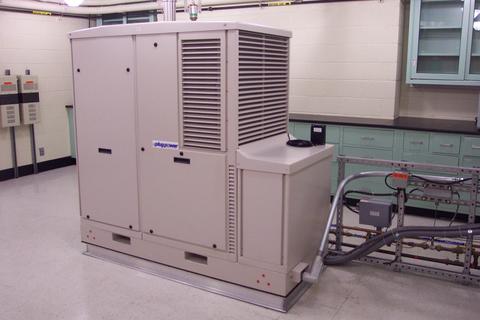Micro-Combined Heat and Power Device Test Facility

NIST has developed a test facility for micro-combined heat and power (micro-CHP) devices to measure their performance over a range of different operating strategies and conditions. The facility was designed to test grid interconnected and grid independent systems with natural gas as the fuel and an AC electrical output less than 6 kW.
The device's thermal load can be measured under steady-state conditions or against a simulated real-world load. The test facility can provide a steady thermal load at a specified flow rate and temperature or a realistic thermal load can be applied to the device, which can take the form of a forced-air or hydronic heating system. The test facility encompasses three rooms: an environmental chamber to simulate outdoor ambient conditions, an environmental chamber to simulate indoor ambient conditions, and a control room that houses the data acquisition and control system.
Specifications/Capabilities
Once installed in the test facility, the micro-CHP device, its ambient environment, and the conditions of the heat transfer fluid can be controlled to perform a variety of tests. The outdoor environmental chamber houses the micro-CHP device, and it can vary the ambient temperature from -18°C to 40°C (0°F to 104°F) and the relative humidity from 20% to 100%. Any equipment that would typically be installed indoors, which includes domestic hot water storage, pumps, etc., is placed in the indoor chamber. The indoor environmental chamber has the full range of ambient temperatures and relative humidity as the outdoor chamber, but the conditions will be maintained at more typical indoor conditions.
The test facility has a full suite of data acquisition equipment to measure the device's electrical output, thermal heat recovery, and fuel use. For electrical output to the existing grid, a power analyzer measures the true power, RMS voltage and current, and power factor. To simulate a system that is not connected to the electrical grid, an AC load draws and measures electrical power from the CHP system. A calorimeter continually monitors the heating value of the fuel entering the system. Thermocouples and platinum resistance thermometers measure the temperature rise of the water used for domestic hot water heating. A turbine and magnetic flow meter measure the flow of water for the domestic hot water system. With these values, all of the energy produced and consumed by the CHP can be determined.

